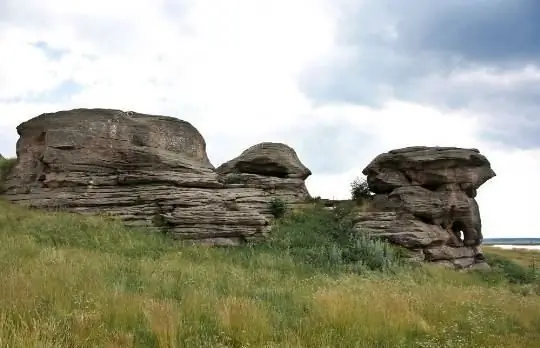
Description of the attraction
The sanctuary on Lake Bolshie Allaki is an archaeological site located in the southeast of Lake Bolshie Allaki near the village of Krasny Partizan (Kaslinsky district). Fourteen rocky outcrops of bizarre shapes are spread out on a small hill 50 meters from the water. The maximum height of the rocks reaches 8-10 m. One of these rocks resembles a human face with a humped nose, and the other resembles a stone sphinx. In ancient times, there was a sanctuary here.
The archaeological site was discovered and first described in 1914 by the Ural archaeologist Vladimir Yakovlevich Tolmachev. Here he found and sketched ancient rock paintings, some of them have survived to this day. During the excavations V. Ya. Tolmachev found bronze and stone arrowheads, a copper spear, pottery fragments, a round granite slab and a copper bird-shaped idol. In addition, two human skulls were found in the lake. The archaeologist dated these finds to the Mesolithic, Neolithic and Bronze Age.
In 1969, this territory was re-examined by archaeologist V. T. Petrin, who managed to find another, hitherto unknown group of rock paintings, as well as products made of rock crystal.
One more rocky outcrops - Small tents - are located on the western shore of the lake. They are much more modest than the Big Tents, however, ancient writings have also been discovered here.
In total, archaeologists have discovered on two rocks three groups of ancient drawings made on the rocks with ocher. Almost all the drawings are under a rock canopy that protected them from precipitation. There are many anthropomorphic images among the drawings. Geometric motifs predominate: nets, ridges, rhombuses and individual segments. Scientists suggest that sacrifices were carried out at this place.
The meaning of the petroglyphs has not been completely unraveled. There are suggestions that the writings and objects of the sanctuary that can be seen today were made by an unknown people who left these lands in time immemorial.






